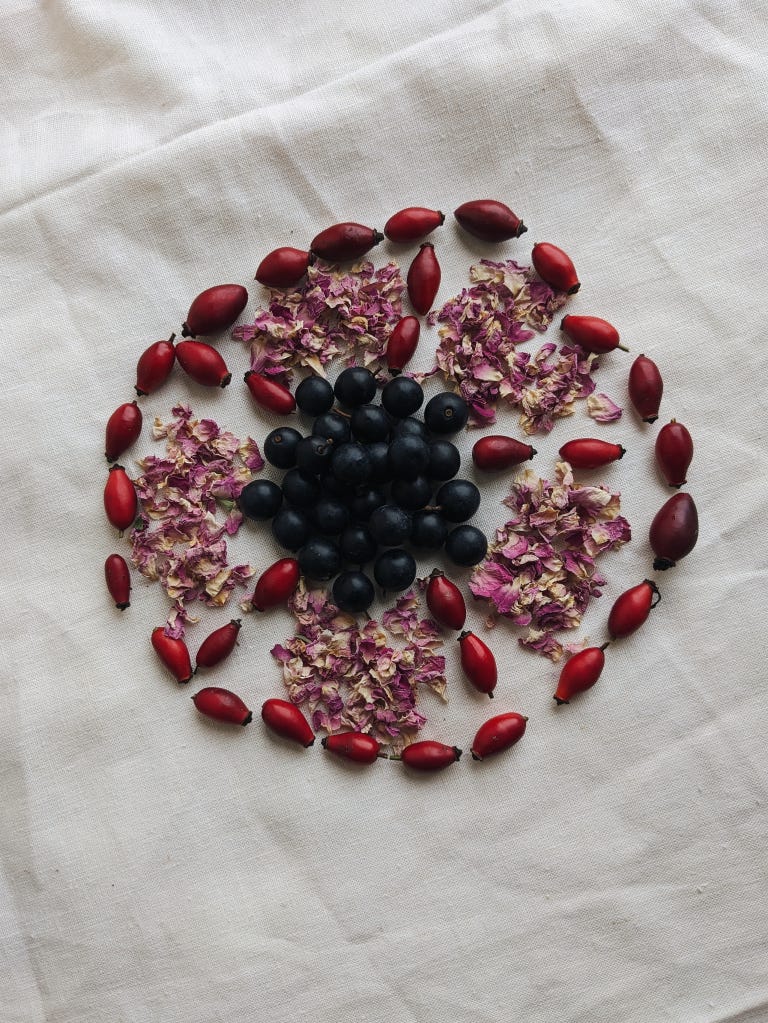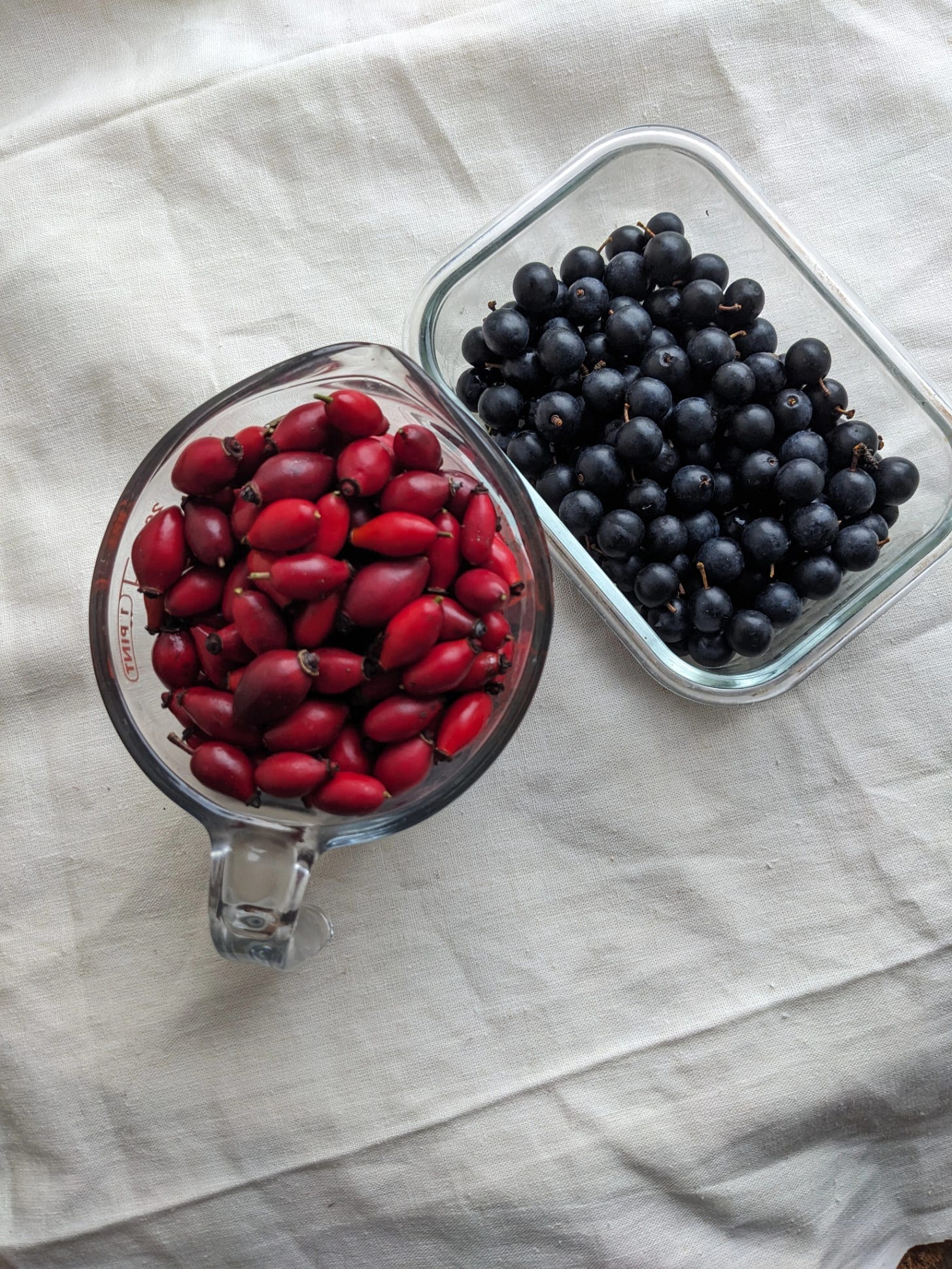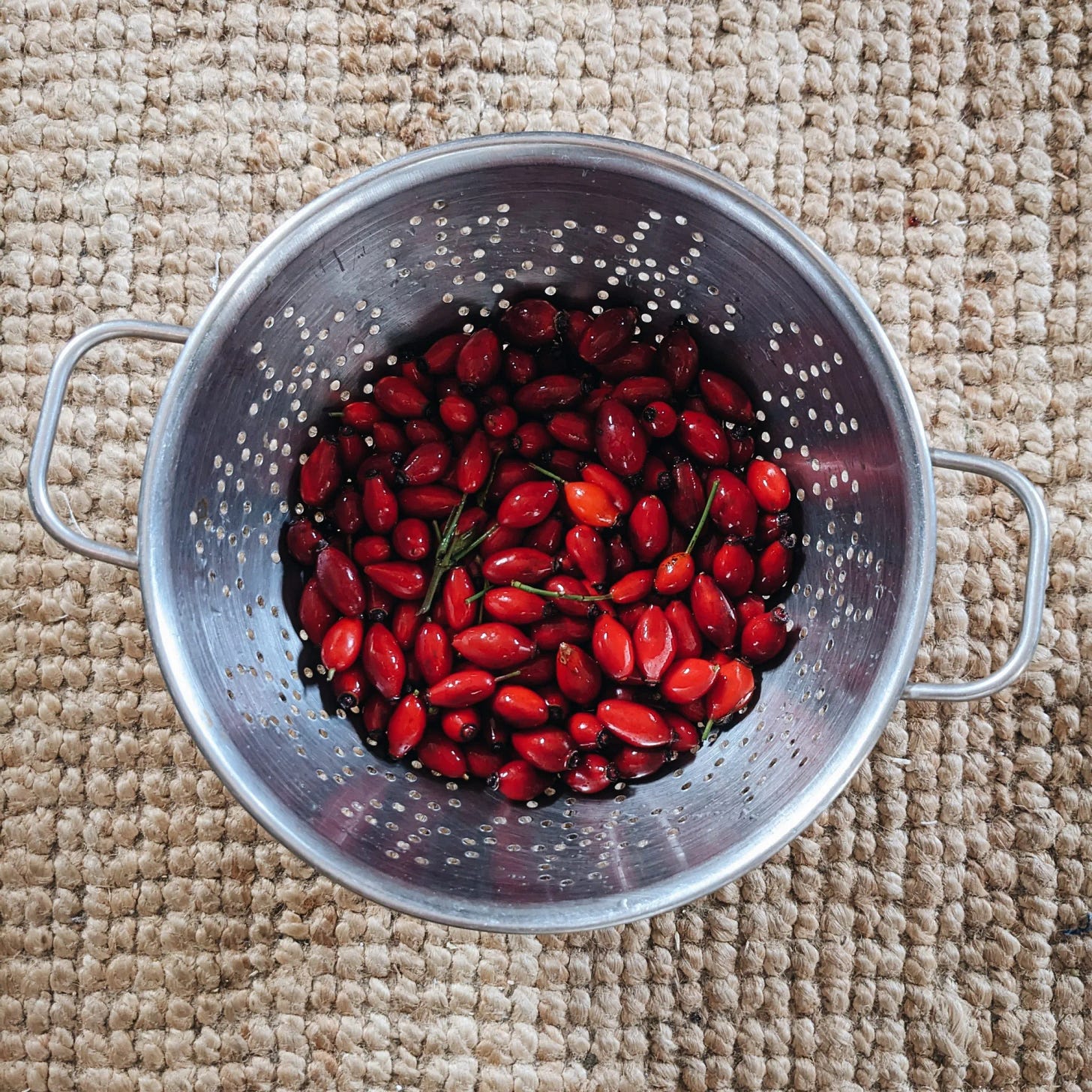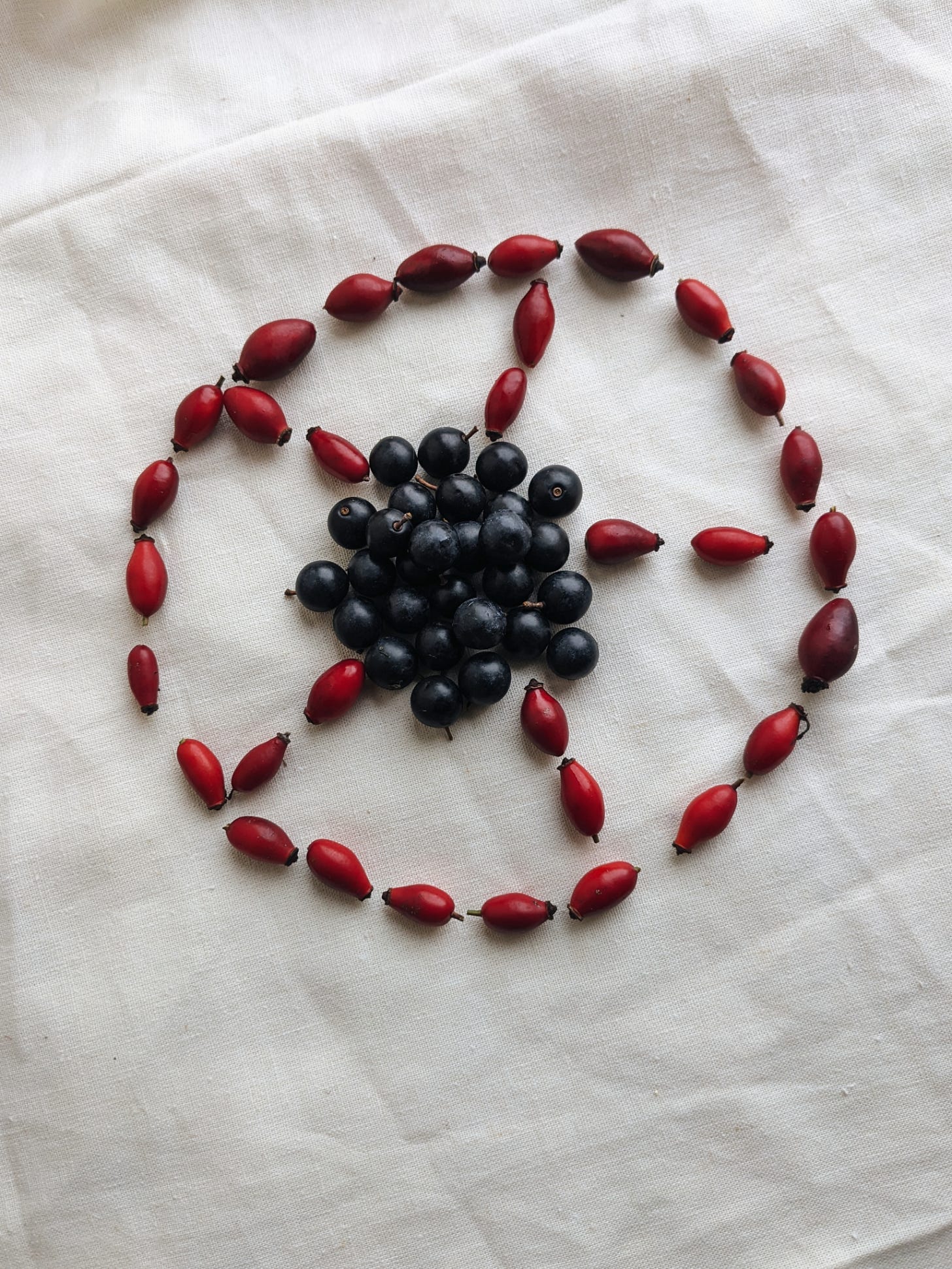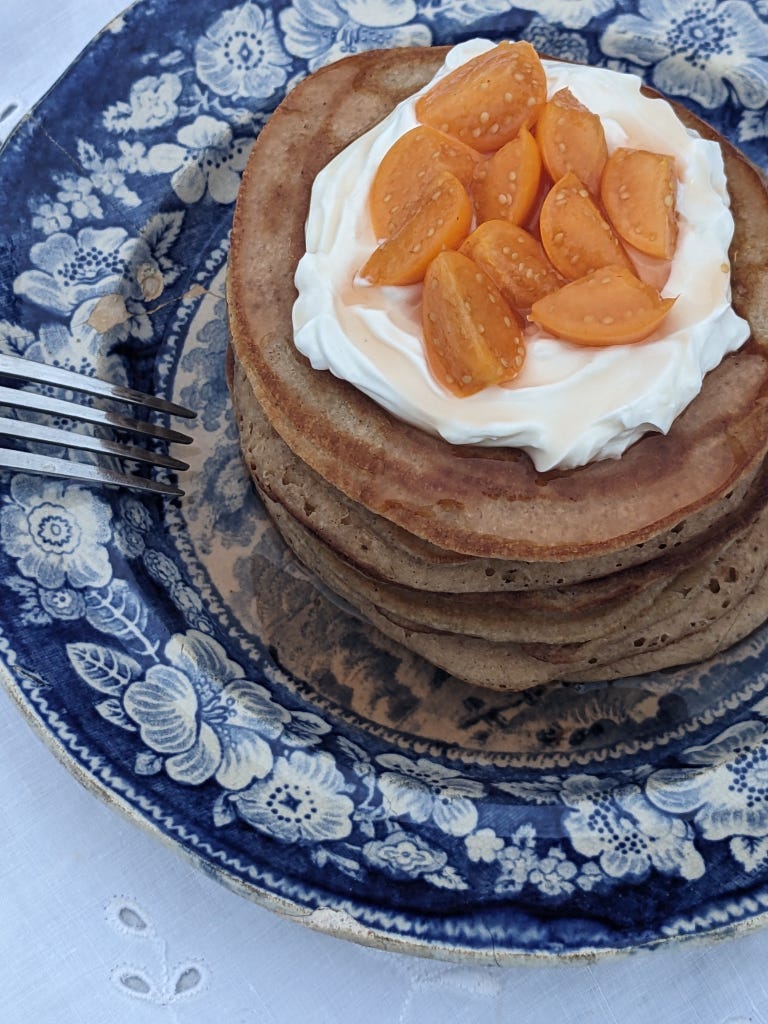It’s getting a little bit frosty here in the UK ~ the days are getting shorter, the nights are getting longer and the grass is getting crunchier underfoot.
I’ll be honest ~ winter is not my favourite season, give me sunshine over snow any day of the week. I always, always prefer to be hot over cold.
That being said, some things are worth getting cold fingers for ~ picking medicinal rosehips ( the fruit or ‘hip’ of the rose) on a wintery morning might just be one of them.
I’m not sure if there are many things that beat the satisfying feeling of knowing you are making something delicious to look after your future self and loved ones.
After a chilly morning forage ~ coming home, getting cosy and brewing up a pink health-giving syrup that can be enjoyed for a few wintery months might make the cold hands worth while.
Mother Nature knows how to provide. When summer has come to an end, and the the last of the wild roses have disappeared, rosehips come out to offer us all the vitamin C and E we need to help fight off winter colds.
Related to apples and crabapples and famed for being packed full of anti-oxidants, rosehips are said to help reduce inflammation and be a soothing tonic for those feeling under the weather.
During the 18th century, it was found that rosehips could provide enough vitamin C to help prevent scurvy. Big boxes of rosehips were taken aboard ships for the sailors to use as supplements during long voyages across the seas.
100 grams of oranges can contain 53mg of vitamin C
100 grams of rosehips can contain 426mg of vitamin C
(figures from ‘everything you need to know about rosehips’ by Home is where out Heart is).
WHEN TO HARVEST?
I was a tad over-eager and went out with a container as soon as I saw the shiny red buds on the bushes. But, the best way to harvest rosehips is to have patience.
“You should wait until after the first frost because, as with vegetables, the extreme cold damages and stresses the plant, making the sugars in the fruit more concentrated - so you get a sweeter hip” ~ Wild Dispensary
However, if like me, you are feeling impatient and want your rosehips for playing with now, you can cheat the frost by placing your rosehips in the freezer overnight to fake a thaw. Take them out and let them de-frost before continuing ~ they will be softer and sweeter for it.
For some tips on how to identify rosehips, there is a handy guide from The Salt Box here.
Foraged rosehips can be used to make teas, jams, jellies, oils and syrups. I chose to make a syrup with this sunday’s haul, deciding to leave the oils and jams for a future experiment.
This simple syrup recipe is a slight adaption from this River Cottage recipe and worked a just as well for a sloe berry syrup too ~ just sub the rosehips for sloes and follow along.
There isn’t a specific amount of rosehips you need to make the syrup ~ I think the question is, how much syrup would you like? More rosehips = more syrup.
I picked a good container’s worth and used as many as I could fit in the saucepan. The amount of liquid you receive will depend on the juiciness of the foraged fruit.
A secondary strain helps to get rid of the tiny hairs found inside the rosehips ~ these can be very irritating if ingested and are so prickly they can be used to make a natural itching powder if you so wish.
If you don’t have a fine mesh sieve a double layered muslin works just as well ~ simply wash the textile between each pressing. I just personally prefer the sieve method as I find it less messy and like to save my muslin for making curtains.
I’ve been using my syrup all week to sweeten smoothies; make hot rosehip toddies, with fresh rosemary and thyme; drizzle over sourdough pancakes and sip by the spoonful as a little vitamin C boost when I feel like I need it.
It’s so good poured onto porridge; spooned into plain yoghurt or kefir; drizzled over vanilla ice cream and used to sweeten up sticky rice pudding ~ I like to think of it as a dusky pink honey substitute.
WILD ROSEHIP SYRUP
INGREDIENTS:
A container of foraged rosehips
325g – 975g sugar
Handful of dried rose petals (optional)
+ a couple of clean preserving bottles or kilner jar
+ a really fine mesh sieve (or muslin)
RECIPE:
Use a blender to pulse the rosehips and roughly chop them in batches.
Put the rosehips (and rose petals if you are using them) in a large saucepan and cover with 1.25 litres of water.
Bring the water to a boil, then simmer for 30 minutes.
Using a masher or end of rolling pin squash the rosehips down into the pan every now then to get the juices out.
Leave to cool slightly.
Strain the mixture through the sieve, let the pulp sit for around 30 minutes so all the liquid strains through ~ mashing the hips down with the rolling pin will help to squeeze the last of the juice out.
Sieve the mixture a second time into another container (the 2nd sieving helps to make sure the little hairs from the rosehips are definitely caught).
Rinse out the saucepan and measure the rosehip juice into it.
For every 500ml of liquid add 325g of sugar.
Heat the liquid slowly whilst stirring and all the sugar has dissolved, then bring to the boil and let it simmer for 3 minutes (there might be some foam collecting on the top which can be skimmed off).
Decant the syrup into the prepared bottles / kilner jar and seal once cool enough to touch.
Label your bottle once completely cooled.
Keep in the fridge once opened and enjoy for up to 4 months.
P.S. Taste test it as you add the sugar. I only used half of what is suggested in the recipe as it was sweet enough for my liking. But less sugar also means less of a shelf life ~ so if you want it last the full 4 months, sugar is your friend here.
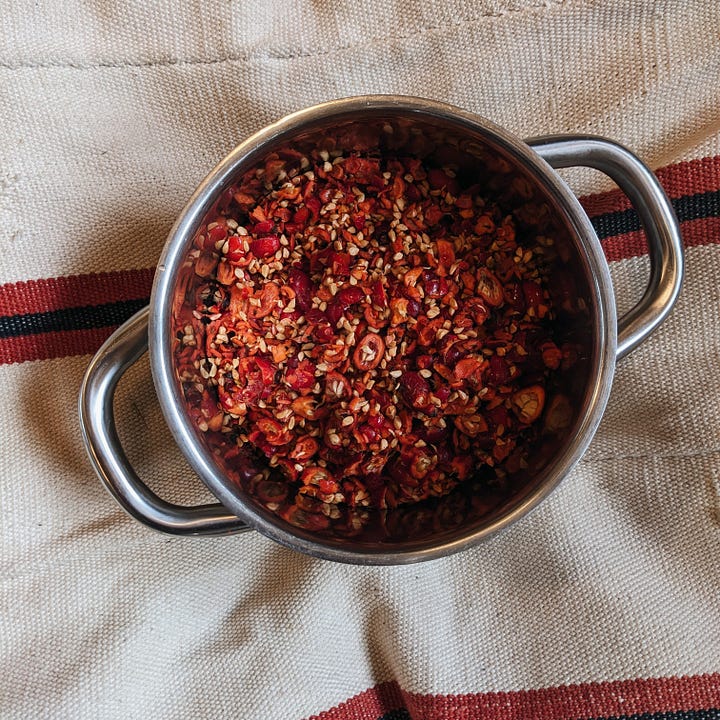
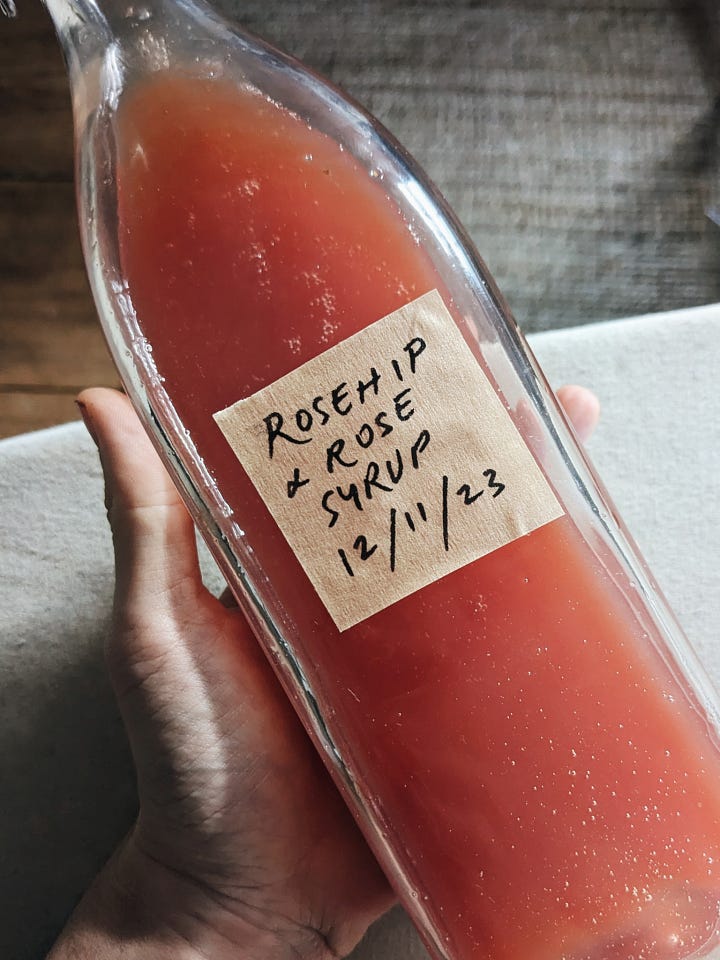
A fleeting thought ~ a medicinal drink needs a medicinal looking bottle.
Why not continue the theme and store the syrup in something fit for such a remedial tonic:
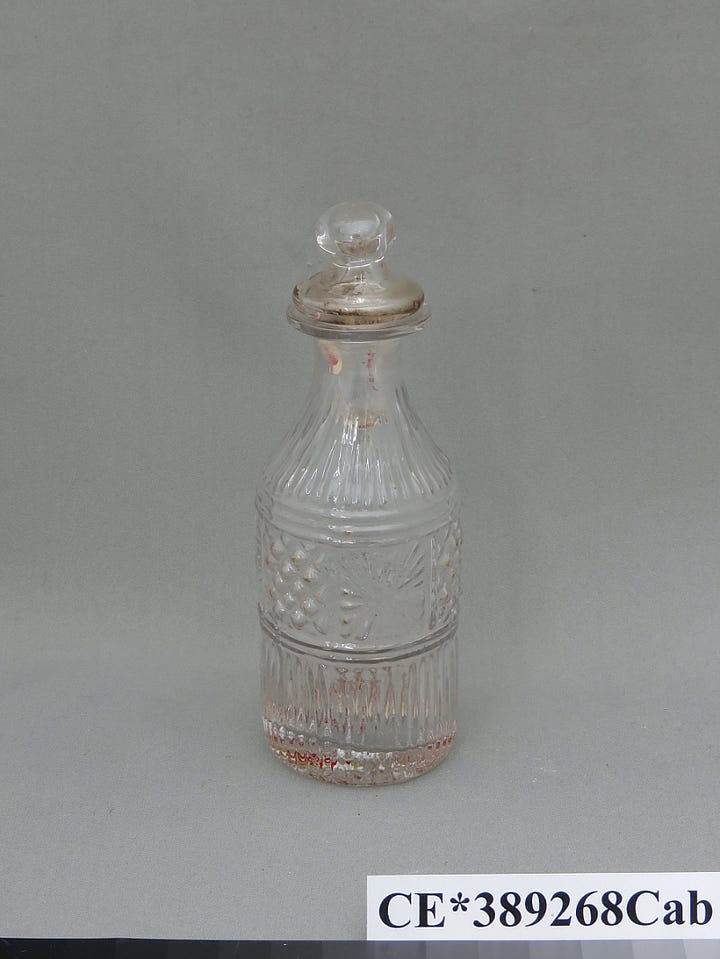
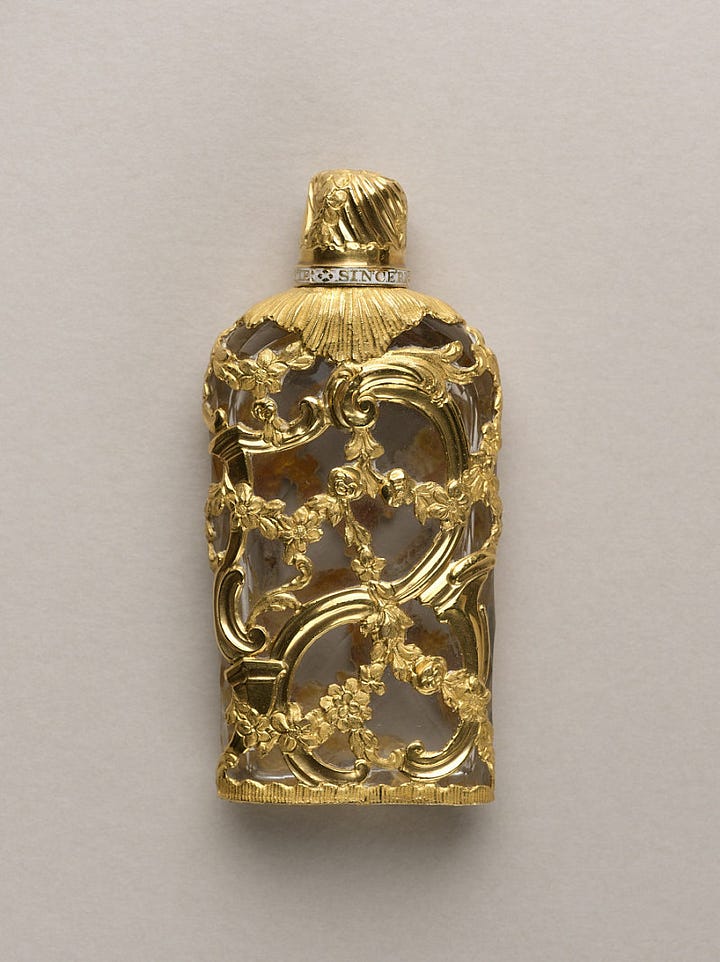
And to end, some sweet words from Okanagan Lavender & Herb Farm:
Do you forage too?
Is there anything you’d love to read about on the subject of wild picking?
What is your favourite recipe to beat the winter blues?
Would love to hear any thoughts, feelings and inspirations.
With love,
Fleur x





